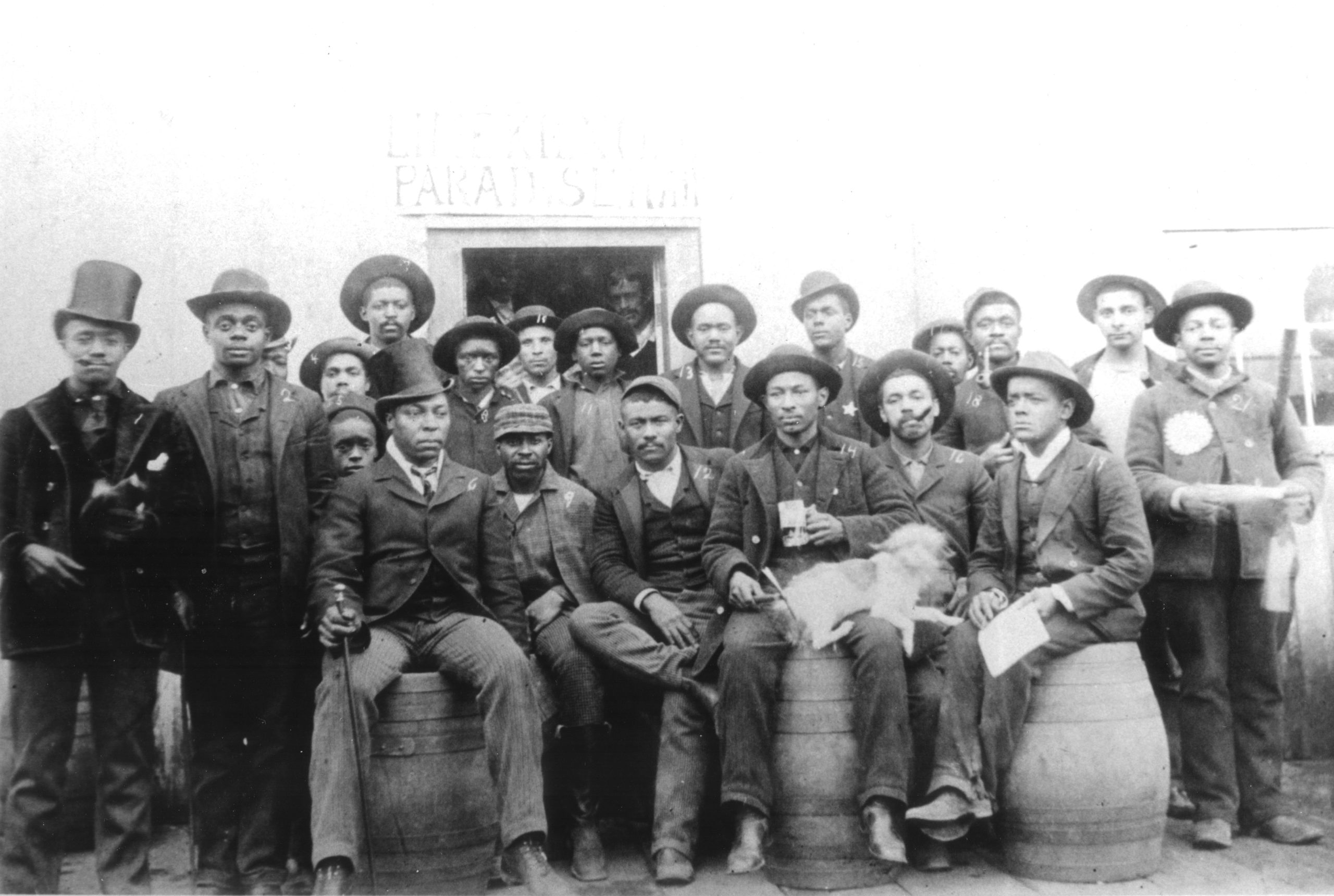Last week’s column told the story of African-Americans who went to work in the coal mines of the Pacific Northwest. Often used as strikebreakers and to thwart white labor unions, blacks were subject to harassment from striking miners or dismissal by mine owners after strikes had settled.
With nowhere else to turn, these workers sought support from fellow blacks.
Such was the case with this rare group portrait of African-American coal miners posed in front of a building and under a sign which read: The Lime Kiln Club / Paradise Hall.
The location was Newcastle, the largest coal mine in King County at the time.
Their clothes suggest a date in the 1890s. From research undertaken by the Renton History Museum, it’s known that the Lime Kiln Club was a satirical creation of a Chicago newspaperman, Charles Bernard Lewis.
His 1882 book “Brother Gardner’s Lime-Kiln Club” used African-American dialect to record meetings of a group of professional men – doctors, lawyers, judges, ex-military officer, and teachers.
Their dialect and humor sought to undercut the significance of clubs formed by African-Americans, who met for mutual support, social uplift, and to battle segregation.
Why a Newcastle group of blacks chose the Lime Kiln Club as their name is a mystery.
Perhaps they sought to turn stereotypes on their head by making real what Lewis had satirized. In any case, societies, clubs, and fraternal organizations of common-minded people have long been a vehicle for social advancement, sometimes accompanied by the consumption of alcohol and usually conditioned upon a spirit of mutual aid towards fellow members.
This photo #1984.075.1887 comes courtesy of the Renton History Museum.








